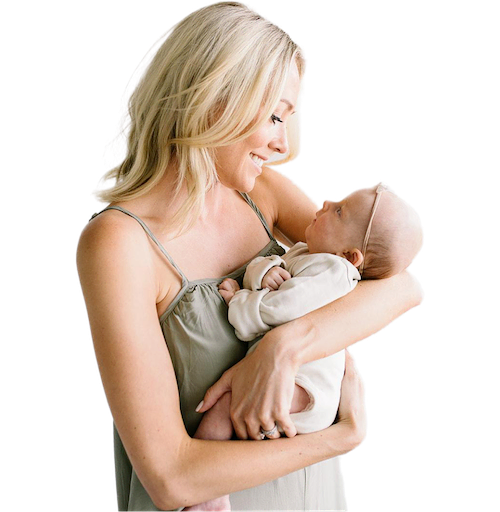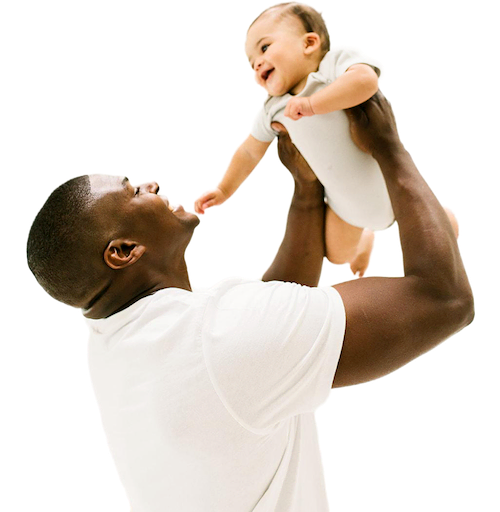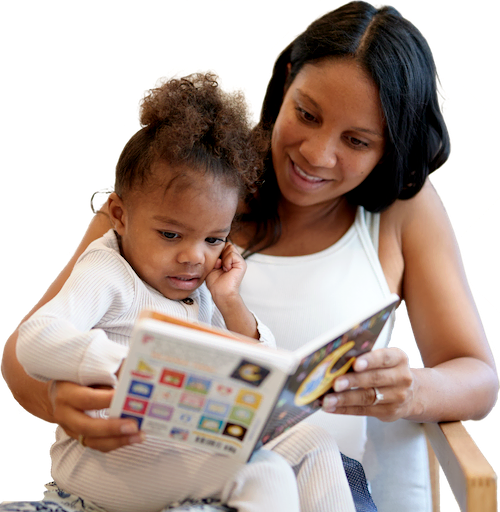Let’s talk about sleep sacks and wearable blankets for babies. I’ll tell you all about the purpose of sleep sacks, how to choose the best option for your baby or toddler, what sleep sack TOG ratings mean, and when to stop using them.
What is the purpose of a sleep sack? What are the benefits of a sleep sack?anchor
A sleep sack is simply a zip up “bag” that your baby or toddler can wear as an alternative to a blanket.
Why would you want to use a sleep sack or wearable blanket?
1. Promotes safety. Loose bedding in your baby’s crib or bassinet simply isn’t safe. (Check out The American Academy of Pediatrics (AAP) safe-sleep recommendations.). I also have a safe sleep checklist that you can download.
2. Provides warmth all night. Many little ones are active sleepers. Even if your child is old enough for blankets (12 months or older), these blankets rarely stay in place during sleep. Using a sleep sack instead ensures that your baby can stay warm all night long.
3. Cues the brain for sleep. Did you know that when you get into your bed at night, the act of pulling your sheet up tells your brain that sleep is coming? The same thing applies to your baby. When you zip up that sleep sack, it sends a message to their little brain “Oh, it’s time to go to sleep.”
4. Discourages climbing. If you have a little one who is trying to crawl out of the crib, a sleep sack discourages climbing and makes it much harder to swing a leg up over the side of the crib and crawl out.
Are sleep sacks safe?anchor
Yes! Sleep sacks are safe for your baby to wear for sleep.
Even if my baby rolls onto their tummy? Yep, sleep sacks are still safe for babies who can roll to their tummies because they have their hands and arms free!
Safety Tip: It’s important to make sure that your little one has a sleep sack that fits properly and is the proper TOG rating for the temperature of their room. Please check manufacturer’s guidelines to determine if your baby’s sleep sack fits them properly.
Are weighted sleep sacks safe?anchor
No, they’re not. According to the American Academy of Pediatrics (AAP), weighted sleep sacks and weighted swaddles are not safe for sleep and should not be used.
Can I use a sleep sack for a newborn?anchor
You can use a sleep sack for a newborn, as long as it fits properly. However, I want you to know that most newborns sleep best with their arms swaddled. Swaddling calms newborns by keeping them snug like they were in the womb. This gives them a feeling of comfort and security. If your newborn hates the swaddle or you’re wondering how to swaddle a newborn, my blogs can help.
When should I start using a sleep sack?anchor
A great time to start using a wearable blanket is when your baby shows signs of rolling and it’s time to transition from the swaddle. If you have a baby who has already transitioned out of the swaddle but isn’t using a sleep sack yet, that’s okay! You can introduce one now; it’s not too late.
How do I transition to a sleep sack?anchor
Here are things to keep in mind when transitioning from a swaddle to a sleep sack:
Transition when your baby is ready. Most babies will be ready to transition from a swaddle to a wearable blanket once they show signs of rolling.
Choose the right sleep sack. Find a sleep sack that fits your baby well and has a TOG rating appropriate for your baby’s room temperature.
Swap the swaddle for a sleep sack. If your baby is used to a swaddle or transitional item (like the Swaddle Sleeves), you can switch to the sleep sack instead of these items. I have a step-by-step guide on how to transition out of the swaddle that can help if you want more ideas.
Add the sleep sack to your routine. If you’ve never used a sleep sack and want to start using one, you can start by adding it as one of the last steps in your bedtime routine. It can help to use the sleep sack for the first time at bedtime and then start using it for naps the next day.
When do you stop using a sleep sack?anchor
I recommend using a sleep sack until it’s time to transition to a toddler bed, which is often around 3 years old. When you're ready, simply trade your toddler's sleep sack for a blanket.
Expert Tip: If your toddler loves their sleep sack, you can continue to use it in the toddler bed. You’ll just want to start using a sleep sack with holes for their little feet.
What is a sleep sack TOG rating?anchor
TOG stands for “thermal overall grade,” a common term in the textile industry. It basically indicates how warm your sleep sack is going to be. I like to think of it in terms of a sheet (.5), a blanket (1.0), and a heavy comforter (2.5). Most company websites even give temperature range recommendations to go with their TOG ratings. When shopping, see what you think would be best for your house, your climate, and your baby!

Text version of Sleep Sack TOG Chart table
| TOG Rating | Room Temperature |
|---|---|
| .5 | 74-78* F (23-26* C) |
| 1.0 | 69-75* F (20-22* C) |
| 2.5 | 61-68* F (16-20* C) |
What should my baby wear under a sleep sack?anchor
What your baby or toddler wears under their sleep sack depends on the temperature of the room, the TOG rating of their sleep sack, and your baby’s comfort.
Here’s my motto: “Assess, don't obsess.” What does that mean? I want you to assess how your baby looks and feels so that you can make an adjustment if needed. Let me show you some examples:
Your little one may be too hot if their cheeks are flushed and their back or neck is sweaty. Simply switch to a lighter sleep sack or remove a layer of clothing from under the sleep sack.
Your baby may be too cold if the trunk of their body (chest, back, and belly) feels cool/cold to the touch. Rather than adding a blanket (which isn't safe for little ones under 12 months old), try a sleep sack with a higher TOG rating or add a layer of clothing under the sleep sack.
Expert Tip: If your baby’s fingers or toes feel cool while they sleep, this is not a good indication of whether they are warm enough or not. Feeling the trunk of their body (chest, back, and belly) is the best way to assess if your baby is at a comfortable temperature for sleep.
Want to see a few examples of this? I’ll show you here in this video.
Does my baby need a sleep sack in the summer?anchor
If your baby uses a wearable blanket, you can continue to use one during the summer. You may need to choose a different sleep sack or adjust what your baby wears underneath the sleep sack based on the temperature of your baby’s room.
For example, if your baby typically uses a 1.0 TOG sleep sack, you might change their clothes to be just a onesie or a diaper in the summer, or you might switch to a .5 TOG sleep sack.
How many sleep sacks do I need?anchor
I usually recommend having at least 2-3 sleep sacks on hand. If one gets dirty, you have a backup. If your home has different temperatures during different seasons, it’s also nice to have a few different fabrics or TOG ratings.
What is the best sleep sack for my baby or toddler? anchor
Finding the best sleep sack for your baby or toddler often depends on what you’re looking for in a sleep sack. There are so many options on the market. Let me share some of my favorites with you:
Best lightweight sleep sack for summer or warmer climatesanchor
Look for a .5-.8 TOG sleep sack with a breathable material. Kyte, Halo, Lou Lou Lollipop, and PurComfy all have great options for these lightweight sleep sacks.
Best sleep sack for winter or colder climatesanchor
Consider a 2.5 TOG sleep sack. Kyte, Lou Lou Lollipop, Mosebears, Purcomfy, and Woolino are great choices. Gunamuna even has an option with long sleeves.
Best sleep sack for toddlersanchor
Lou Lou Lollipop and Gunamuna have sleep sacks in sizing up to 36 months that are perfect for toddlers or really tall babies!
Best sleep sack for walkers anchor
Gunamuna, Halo, Kyte, and Nyte Nyte Baby all have sleep sacks that allow your toddler’s feet to be free.
Best transition sleep sackanchor
Swaddle Sleeves (Use code Cara10) is a fantastic transitional product that can help with the transition out of the swaddle. Some parents also love Merlin’s Magic Sleep Suit (Use code CARA15).
Best sleep sack for newbornsanchor
Truly, most newborns will do best with a swaddle. If your newborn can no longer be safely swaddled, then the best sleep sack for them will be based on their size to ensure proper fit.
Expert Tip: Does your baby seem to hate the swaddle? My newborn class can help. Sometimes, it really is what comes AFTER the swaddle that makes the biggest difference. For many babies, swaddling is the first step towards getting longer stretches of night sleep. Don’t worry: I’ll show you all the rest of the steps too!
If you’ve introduced a sleep sack and sleep is still a struggle, my classes can help.
Select the class for your baby’s age, and I will hand you the developmentally appropriate tools to get you and your baby set up for success. You don’t have to struggle alone.
Keep in mind that the information and content on this blog is for informational purposes and should not be considered medical advice. If you have questions about your child, please reach out to your doctor.








